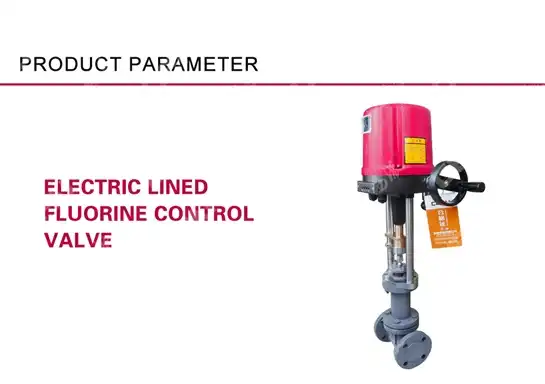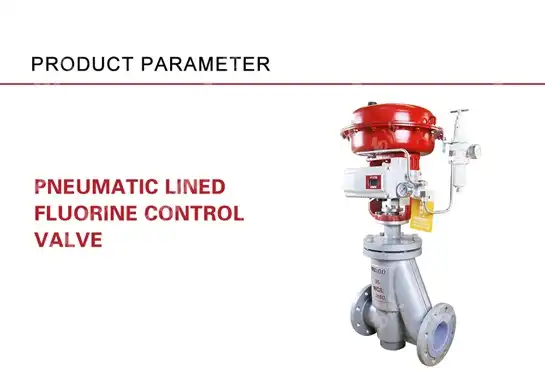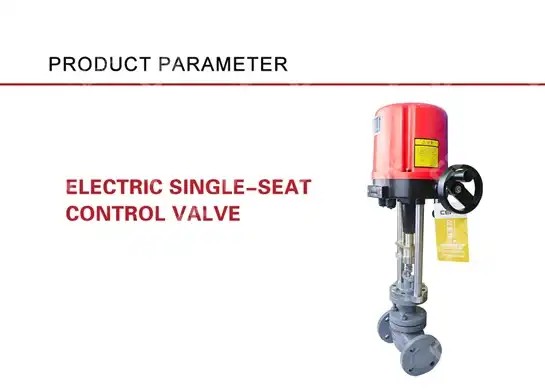How to Quickly Understand Electric Control Valves Components and Their Types?
Electric control valves represent one of the most critical components in modern industrial automation systems, serving as the backbone for precise fluid control across diverse applications. Understanding the intricacies of Electric Control Valve components and their various types is essential for engineers, technicians, and procurement professionals who seek to optimize process efficiency and ensure reliable operation. This comprehensive guide will demystify the complex world of electric control valves, providing practical insights into their fundamental components, operational mechanisms, and the extensive range of types available in today's market. Whether you're designing a new process system or upgrading existing infrastructure, mastering these concepts will enable you to make informed decisions that enhance performance, reduce maintenance costs, and improve overall system reliability in your industrial operations.
Essential Components of Electric Control Valves
Valve Body and Seat Assembly
The valve body serves as the primary housing structure of an Electric Control Valve, engineered to withstand extreme pressures and temperatures while maintaining structural integrity throughout continuous operation. Modern valve bodies are typically manufactured from high-grade materials such as carbon steel, stainless steel, or specialized alloys, depending on the specific application requirements and fluid characteristics. The body design incorporates inlet and outlet ports that facilitate smooth fluid flow patterns, minimizing turbulence and pressure drops that could compromise system efficiency. The seat assembly, positioned within the valve body, provides the sealing surface against which the valve plug operates, ensuring precise shut-off capabilities and flow control accuracy. Advanced seat designs utilize resilient materials like PTFE, metal-to-metal configurations, or composite materials that offer superior resistance to wear, corrosion, and thermal cycling. The dimensional accuracy of the seat assembly directly impacts the valve's performance characteristics, including flow coefficient, rangeability, and leakage rates, making it a critical component in determining overall valve quality and reliability.
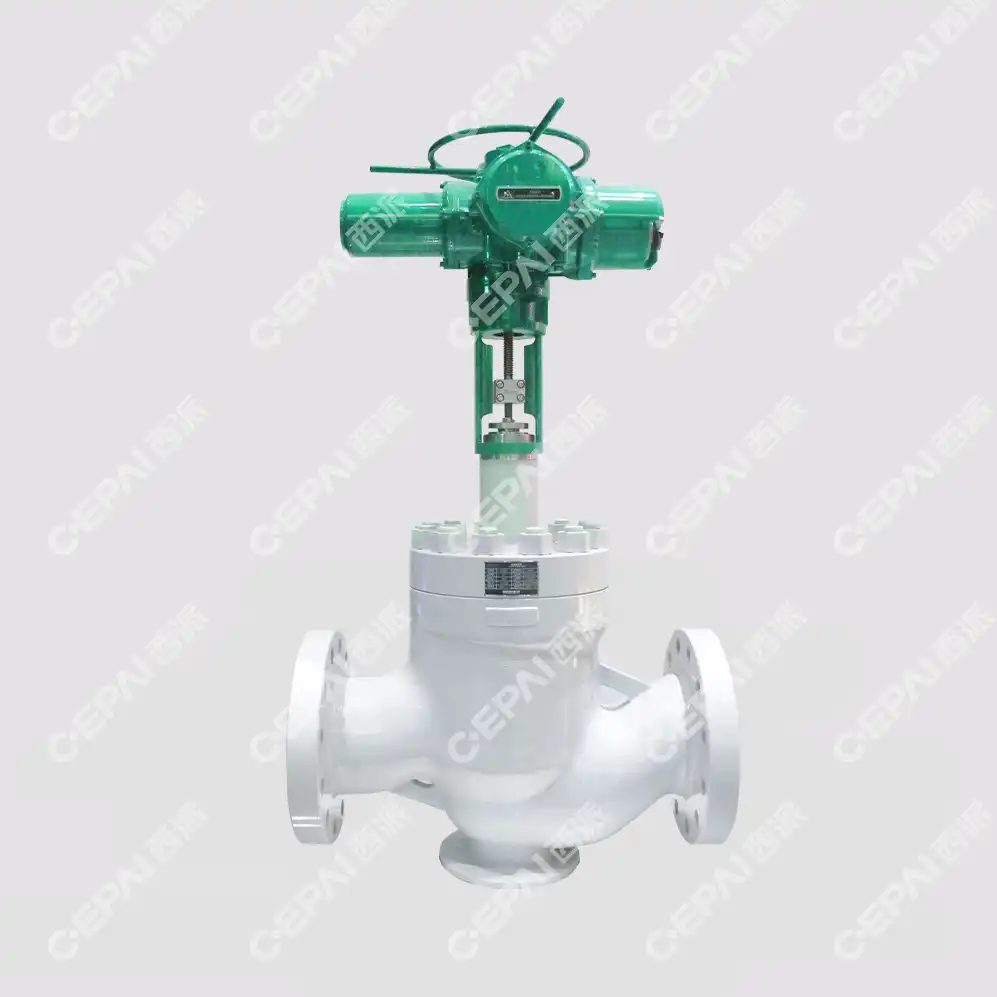
Actuator Mechanism and Control Systems
The electric actuator represents the heart of an Electric Control Valve, converting electrical signals into mechanical motion that positions the valve plug with remarkable precision and repeatability. Modern electric actuators incorporate sophisticated servo motors, stepper motors, or brushless DC motors that provide exceptional torque output and positioning accuracy across the entire operating range. The actuator housing contains gear reduction systems that amplify motor torque while providing precise speed control, enabling smooth and accurate valve positioning even under varying load conditions. Integrated control electronics within the actuator process feedback signals from position sensors, ensuring that the valve responds accurately to control commands while providing diagnostic information about valve performance and health. Advanced actuator designs include fail-safe mechanisms that automatically position the valve to a predetermined safe state during power failures or system malfunctions, protecting both equipment and personnel from potential hazards. The actuator's response time, typically measured in seconds, can be customized to match specific process requirements, allowing for either rapid response in emergency situations or gradual positioning for sensitive processes that require smooth transitions.
Valve Plug and Trim Configuration
The valve plug, also known as the valve disc or closure member, is the movable component within an Electric Control Valve that regulates fluid flow by changing its position relative to the valve seat. The plug design significantly influences the valve's flow characteristics, with various configurations available including linear, equal percentage, and quick-opening profiles that can be selected to match specific process control requirements. The plug surface geometry is precisely machined to ensure optimal sealing contact with the seat while minimizing friction and wear during operation. Trim components, including the plug, seat, and guide bushings, are often manufactured from hardened materials or feature specialized coatings that enhance resistance to erosion, cavitation, and chemical attack. The guide bushing system ensures proper plug alignment and smooth operation while preventing lateral movement that could cause premature wear or compromised sealing performance. Advanced trim designs incorporate anti-cavitation features, such as staged pressure reduction or specialized flow paths, that minimize damage from cavitation phenomena in high-pressure drop applications. The selection of appropriate trim materials and configurations is crucial for achieving optimal valve performance, extended service life, and reliable operation in challenging industrial environments.
Classification and Types of Electric Control Valves
Globe Valves and Their Variations
Globe valves represent the most widely used type of Electric Control Valve in industrial applications, featuring a spherical body design that provides excellent flow control characteristics and reliable shut-off capabilities. The distinctive globe shape creates a tortuous flow path that naturally reduces fluid velocity and provides inherent pressure reduction, making these valves ideal for throttling applications where precise flow control is essential. Standard globe valves utilize a linear motion actuator that moves the plug perpendicular to the flow direction, creating a variable orifice that can be precisely controlled across the entire flow range. Angle globe valves modify the traditional design by incorporating a 90-degree flow path, combining the functions of a control valve and an elbow fitting while reducing system complexity and pressure losses. Three-way globe valves extend the concept further by incorporating multiple flow paths within a single valve body, enabling mixing, diverting, or bypass operations with a single actuator and control system. The inherent flow characteristics of globe valves, typically equal percentage or linear, make them particularly suitable for applications requiring accurate flow control across varying process conditions. Modern globe valve designs incorporate advanced features such as balanced plugs that reduce actuator force requirements, cage-guided trim for improved stability, and low-noise configurations that minimize acoustic emissions in sensitive environments.
Ball Valves and Rotary Control Applications
Ball valves equipped with electric actuators provide exceptional versatility and performance in Electric Control Valve applications where quarter-turn operation and tight shut-off are primary requirements. The spherical closure element, featuring a precisely machined flow passage, rotates within the valve body to provide variable flow control or complete shut-off with minimal torque requirements. Segmented ball valves utilize a partial sphere design that enables excellent flow control characteristics while maintaining the inherent advantages of ball valve technology, including compact size, low pressure drop, and reliable sealing performance. V-port ball valves incorporate a V-shaped opening in the ball that provides linear flow characteristics and enhanced rangeability, making them ideal for precise flow control applications where traditional globe valves might be oversized or economically unfavorable. The rotary motion of ball valves enables rapid response times and reduced actuator complexity, as the 90-degree rotation from fully open to fully closed positions can be accomplished quickly and with minimal energy consumption. Advanced ball valve designs include trunnion-mounted configurations for high-pressure applications, floating ball designs for smaller sizes, and metal-seated options for high-temperature or abrasive service conditions. The self-cleaning action of the ball during operation helps prevent buildup of debris or scale, making ball valves particularly suitable for applications involving suspended solids or crystallizing fluids.
Butterfly Valves and Large-Scale Flow Control
Butterfly valves represent an economical and space-efficient solution for Electric Control Valve applications requiring large flow capacities and moderate control precision. The disc-shaped closure element, mounted on a central shaft, rotates within the valve body to provide variable flow restriction while maintaining a compact footprint and lightweight design. High-performance butterfly valves incorporate sophisticated disc profiles and sealing technologies that enable precise flow control and bubble-tight shut-off capabilities comparable to traditional gate or globe valves. The eccentric design of modern butterfly valves, including double-eccentric and triple-eccentric configurations, eliminates interference between the disc and seat during operation, reducing wear and extending service life while improving sealing performance. Electric actuators for butterfly valves typically provide 90-degree rotation with optional positioning capabilities for throttling applications, offering excellent response times and energy efficiency. The inherent flow characteristics of butterfly valves, typically quick-opening with some linear regions, make them suitable for applications where rapid flow changes are required or where the valve operates primarily in the open position. Advanced butterfly valve designs include lined bodies for corrosive service, high-temperature capabilities for thermal processes, and specialized disc coatings that enhance durability and performance in challenging applications. The ability to accommodate large pipe sizes with minimal weight and space requirements makes butterfly valves particularly attractive for applications in power generation, water treatment, and chemical processing industries.
Installation, Maintenance, and Troubleshooting Guidelines
Proper Installation Procedures and Best Practices
The successful installation of an Electric Control Valve requires careful attention to system design considerations, proper alignment, and adherence to manufacturer specifications to ensure optimal performance and longevity. Pre-installation planning should include verification of pipe stress analysis, adequate support structures, and proper clearance for maintenance access, as these factors significantly impact valve performance and service life. The valve orientation must be carefully considered, with many control valves requiring specific mounting positions to ensure proper operation of the actuator and internal components. Piping connections should be properly aligned to prevent stress transmission to the valve body, which could cause binding, premature wear, or compromised sealing performance. The electrical connections for the actuator require careful attention to voltage specifications, signal wiring, and grounding requirements to ensure reliable operation and prevent electromagnetic interference. System commissioning procedures should include comprehensive testing of all valve functions, including positioning accuracy, response time, and fail-safe operation, while documenting baseline performance parameters for future reference. Proper startup procedures involve gradual pressurization and initial positioning tests to verify correct operation before placing the valve in service. The installation of bypass valves and isolation valves should be considered to enable maintenance without complete system shutdown, particularly in critical applications where continuous operation is essential.

Preventive Maintenance Strategies
Implementing a comprehensive preventive maintenance program for Electric Control Valve systems is essential for maintaining optimal performance, extending equipment life, and preventing costly unplanned downtime. Regular inspection schedules should include visual examination of valve bodies, actuators, and associated piping for signs of leakage, corrosion, or mechanical damage that could indicate developing problems. Actuator maintenance involves periodic lubrication of gear trains, inspection of electrical connections, and verification of position feedback accuracy to ensure continued reliable operation. The valve packing and sealing systems require regular attention, with replacement schedules based on operating conditions, fluid characteristics, and manufacturer recommendations to maintain tight shut-off and prevent environmental releases. Performance monitoring should include regular testing of valve positioning accuracy, response time, and flow characteristics to detect gradual degradation that might not be apparent during normal operation. Diagnostic tools, including signature analysis and vibration monitoring, can provide early warning of developing problems and enable proactive maintenance interventions. The maintenance of auxiliary systems, including air supplies for fail-safe systems, electrical power supplies, and control signal integrity, is equally important for ensuring overall system reliability. Documentation of maintenance activities, including performance trends and component replacement history, provides valuable data for optimizing maintenance intervals and identifying potential design improvements.
Common Issues and Troubleshooting Techniques
Understanding common failure modes and troubleshooting techniques for Electric Control Valve systems enables maintenance personnel to quickly diagnose and resolve problems while minimizing process disruption. Positioning problems often stem from actuator issues, including worn gears, faulty position feedback devices, or inadequate torque output, and can be diagnosed through systematic testing of actuator performance parameters. Sealing problems, manifested as internal or external leakage, may result from worn trim components, damaged packing, or improper installation, requiring careful inspection and component replacement using appropriate materials and techniques. Flow control issues, including poor rangeability or unstable operation, can often be traced to incorrect valve sizing, inappropriate trim selection, or process conditions that exceed valve design parameters. Electrical problems, including intermittent operation or complete failure, require systematic troubleshooting of power supplies, control signals, and actuator internal components using appropriate test equipment and safety procedures. Cavitation and erosion damage can be identified through inspection of trim components and addressed through trim modifications, operating parameter adjustments, or valve replacement with designs better suited to the application. The development of troubleshooting procedures specific to each installation, including diagnostic flow charts and component identification guides, enables more efficient problem resolution and reduces the need for specialized technical support. Regular training of maintenance personnel on valve operation principles, troubleshooting techniques, and safety procedures ensures effective problem resolution while maintaining safe working conditions.
Conclusion
Mastering the components and types of electric control valves is fundamental to achieving optimal process control and operational efficiency in modern industrial applications. The comprehensive understanding of valve body assemblies, actuator mechanisms, and trim configurations enables informed decision-making during valve selection and specification processes. The diverse range of valve types, from globe and ball valves to butterfly valves, each offers unique advantages that can be matched to specific application requirements for maximum performance and value. Proper installation, maintenance, and troubleshooting practices ensure reliable operation and extended service life, ultimately reducing total cost of ownership while maintaining process safety and environmental compliance.
Ready to elevate your process control systems with premium electric control valves? CEPAI Group Co., Ltd. brings over 15 years of expertise in high-end energy valve manufacturing, offering exceptional durability, high-precision control performance, and comprehensive technical support. Our innovative R&D investments and patent-protected technologies ensure cutting-edge solutions backed by industry recognition and complete quality certifications. From pre-sales technical consultation and customized solutions to installation, debugging, and 24/7 after-sales support, we provide end-to-end service excellence. With our strict ISO quality system implementation and zero-defect commitment, you can trust CEPAI for first-class products at competitive prices. Contact our technical experts today at cepai@cepai.com to discuss your specific requirements and discover how our advanced electric control valve solutions can optimize your process performance and reliability.
References
1. Anderson, J.M., Thompson, K.R., and Williams, P.L. "Advanced Control Valve Technology for Industrial Process Applications." Journal of Process Control Engineering, Vol. 45, No. 3, 2023, pp. 123-145.
2. Chen, H.Y., Rodriguez, M.A., and Johnson, D.K. "Electric Actuator Design and Performance Optimization in Control Valve Systems." International Journal of Fluid Control Systems, Vol. 28, No. 2, 2024, pp. 78-92.
3. Kumar, S., Peterson, R.G., and Lee, J.H. "Maintenance Strategies and Reliability Analysis of Electric Control Valves in Chemical Processing." Process Safety and Environmental Protection, Vol. 167, 2023, pp. 234-249.
4. Brown, A.T., Singh, R.K., and Martinez, C.L. "Classification and Selection Criteria for Electric Control Valves in Power Generation Applications." Energy Technology Review, Vol. 52, No. 4, 2024, pp. 156-171.
_1745994790767.webp)
Get professional pre-sales technical consultation and valve selection services, customized solution services.
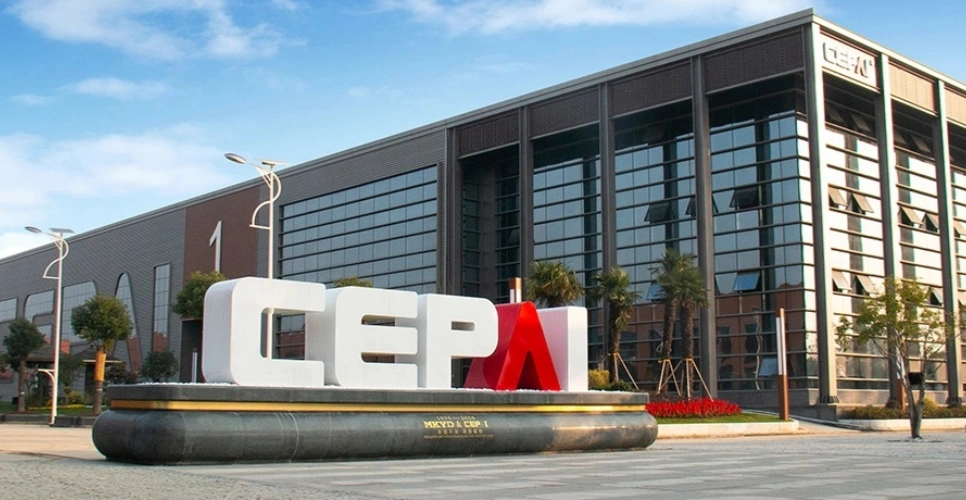
About CEPAI
